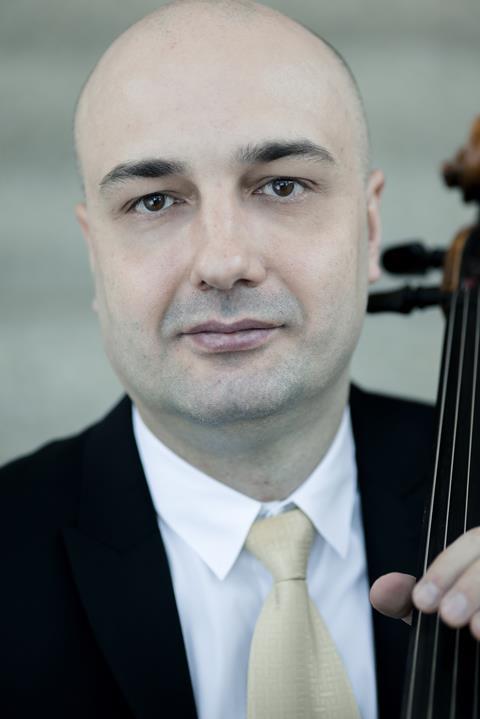Cello professor at the Geneva–Neuchâtel University of Music, Bern University of the Arts, and Zakhar Bron School of Music in Zurich, Denis Severin shares exercises on open strings to enhance tone and fluidity of sound

The following extract is from The Strad’s November 2021 issue Technique feature ‘Working on open strings’. To read it in full, click here to subscribe and login. The November 2021 digital magazine and print edition are on sale now
EXERCISES
The contact point for the following exercises should be midway between the fingerboard and the bridge, where you can produce a warm, full sound. Search for a beautiful tone at every moment and experiment to find what works best for you.
Relaxing into the string
Exercise 1 will help to ensure that your shoulders and arms are relaxed, so that you can play with complete freedom and flexibility.
- Relax your arms over the fingerboard, then gently rock from side to side (1A)
- Place the bow on the string, at the frog. Rest the right wrist on the stick and support the bow with the left hand (1B)
- Use the left hand to begin a down bow. You should hear a crunch!
- Move the right hand into playing position, still with the left hand on the stick. Flex both thumbs to make sure they are relaxed and free (1C)
- Return the right hand to normal playing position, but leave the left hand resting on the stick (1D). With that same sense of freedom and weight, play some open-string double-stops with a full, beautiful sound, in the lower half of the bow.

Building flexibility and control at the frog and the tip
When you play, try to think of the bow in two parts: the lower half and the upper half. In the lower half, you need to use weight to play, but in the upper half you need to push, with elasticity. In the following exercise, practise moving between the two:
- Use the weight of your arm to play eight beautiful, full double-stopped crotchets (𝅘𝅥) at the heel of the bow. Use a consistent bow speed and distribution for every note, and play with strict rhythm
- Repeat the same pattern at the tip, again very rhythmically. This time push the bow, with elasticity and suppleness in your arm, to create maximum contact with the string and produce the best possible sound
- Continue to switch between the heel and the tip, until you can play in both halves of the bow with a strong, beautiful sound
- Repeat the exercise, but this time hold each note for two beats, then three beats and so on, up to eight, with metronomic rhythm. Work out how to do this while maintaining an excellent tone
Practising controlled changes anywhere in the bow
Next, this ‘walking bow’ exercise will improve your changes at every point in the bow. On any open string of your choice:
- Play in rhythmic crotchets, starting with a down bow of around 10cm from the frog. Follow it with an up bow of around 9cm, a down bow of 10cm, and so on. Repeat until you reach the tip
- Do the exercise again in reverse, so that each up bow is slightly longer than the down bow, until you are back at the heel again
Adjusting bow angle for smooth string-crossings

To finish, practise adjusting the level of the bow to move between different open strings smoothly and seamlessly, without interrupting the sound. Begin by working on string-crossings between adjacent strings, in ascending and descending order (exercise 2a). Once you can do this well, mix all the strings together to practise moving between them with a consistently beautiful and even tone (exercise 2b)
My checklist
When my students are working on these exercises, I give them a checklist to follow at all times. I advise them to keep this on the music stand when they play, so that they never forget:
- Check that the back and shoulders are relaxed
- Feel the weight of the bow at the frog, and push the bow with elasticity at the tip
- Adjust the bow angle to align with each string
- Monitor the position of the hand
- Play with seamless, inaudible bow changes
- Cross the strings with care and control
These points are like a chain: if one link is missing, the whole system will break. If the back and shoulders are tense, it will be impossible to use arm weight and gravity to play well at the frog or to be flexible at the tip. Nor will you be able to angle the bow correctly to play on each different string. If the hand cannot move well, good bow changes and string-crossings will be very difficult. By practising open-string exercises daily with these points in mind, you can train yourself to produce a fluid and beautiful sound.










































No comments yet